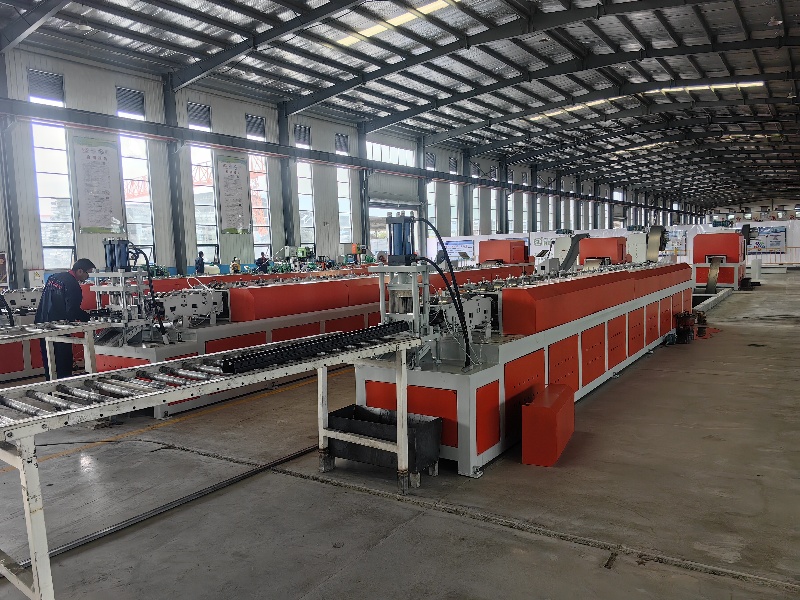Hotline
+86-136 8495 9862
Email:cennia@szmizhi.com
Add::104,Building 27,Third Industrial Zone, Longxi Community,Longgang District,Shenzhen,China.
Coil Forming & Handling Equipment
Surface Treatment Equipment
Solutions
Application
About Us

Welcome to MIZHI
For consultation/feedback, please call the service hotline: +86-136 8495 9862 Email:cennia@szmizhi.com

Standing seam roll formers are a remarkable piece of machinery that have significantly transformed the roofing and cladding industry. These specialized machines are designed to create standing seam metal panels, which offer a host of advantages in terms of durability, weather resistance, and aesthetic appeal.
The basic principle behind a standing seam roll former is the continuous shaping of a flat metal sheet into a standing seam profile. The process begins with the feeding of a metal coil onto the machine. The coil unwind mechanism smoothly unwinds the coil, ensuring a consistent supply of metal to the forming section. This metal sheet then passes through a series of precisely engineered rollers. Each roller in the sequence plays a crucial role in gradually bending and shaping the metal. The rollers are carefully designed and arranged to create the distinct standing seam shape, with raised seams and flat areas in between.
One of the key features of standing seam roll formers is their ability to produce panels of variable lengths. Since the metal is formed continuously, the length of the panel can be customized according to the specific requirements of the roofing or cladding project at hand. This eliminates the need for excessive on - site cutting and reduces material waste. Moreover, the ability to create long, seamless panels provides a clean and elegant look to the finished roof or cladding.

The choice of metal for use in a standing seam roll former is diverse. Commonly, steel, aluminum, and copper are the metals of choice. Steel offers excellent strength and durability, making it suitable for applications where the structure needs to withstand heavy loads and harsh environmental conditions. Aluminum is lightweight and highly resistant to corrosion, which is ideal for areas with high humidity or in coastal regions. Copper, on the other hand, provides a unique and beautiful patina over time, adding a touch of elegance to the building.
The control system of a standing seam roll former is a critical component. Modern machines are equipped with advanced computer - controlled systems that offer precise control over the forming process. Operators can adjust parameters such as the speed at which the metal is fed through the rollers, the pressure applied by the rollers, and the overall dimensions of the formed panel. These computer - controlled systems also allow for the storage of multiple profiles, enabling quick and easy switching between different panel designs.
In addition to the standard standing seam profile, some standing seam roll formers are capable of creating more complex and customized profiles. This might include profiles with additional bends, curves, or decorative elements. This flexibility allows for the creation of unique and architecturally distinct roofing and cladding systems. Some machines can also incorporate features such as perforations or embossments. Perforations can be used for ventilation purposes or to create a decorative effect, while embossments can add texture and visual interest to the panels.
The production capacity of standing seam roll formers can vary significantly. Industrial - scale machines are designed for high - volume production, capable of producing large quantities of panels in a short period of time. These machines are often used in large manufacturing facilities that supply panels for commercial and industrial projects. On the other hand, there are also portable standing seam roll formers available. These smaller machines are ideal for on - site production, especially for smaller projects or in cases where transportation of pre - fabricated panels is difficult or costly.
During the operation of a standing seam roll former, quality control is of utmost importance. This involves monitoring the thickness and quality of the metal being used, ensuring that the rollers are properly aligned and functioning correctly, and checking the integrity of the formed seams. Any deviations from the specified quality standards can result in panels that are prone to leaks, have an improper fit, or lack the desired aesthetic appeal. Regular maintenance and calibration of the machine are essential to ensure consistent quality and reliable performance.
The installation of standing seam panels produced by a roll former is typically carried out using a clip - based system. This allows for thermal expansion and contraction of the panels without causing damage or distortion. The clips are attached to the underlying structure, and the panels are then snapped onto the clips. This installation method provides a secure and weather - tight seal, ensuring the long - term performance of the roofing or cladding system.
In conclusion, standing seam roll formers are an essential tool in the production of standing seam metal panels. Their ability to create custom - length panels with a variety of profiles and features has made them a popular choice in the roofing and cladding industry. The combination of advanced technology, flexibility, and quality control offered by these machines ensures that they will continue to play a vital role in the construction of modern buildings.